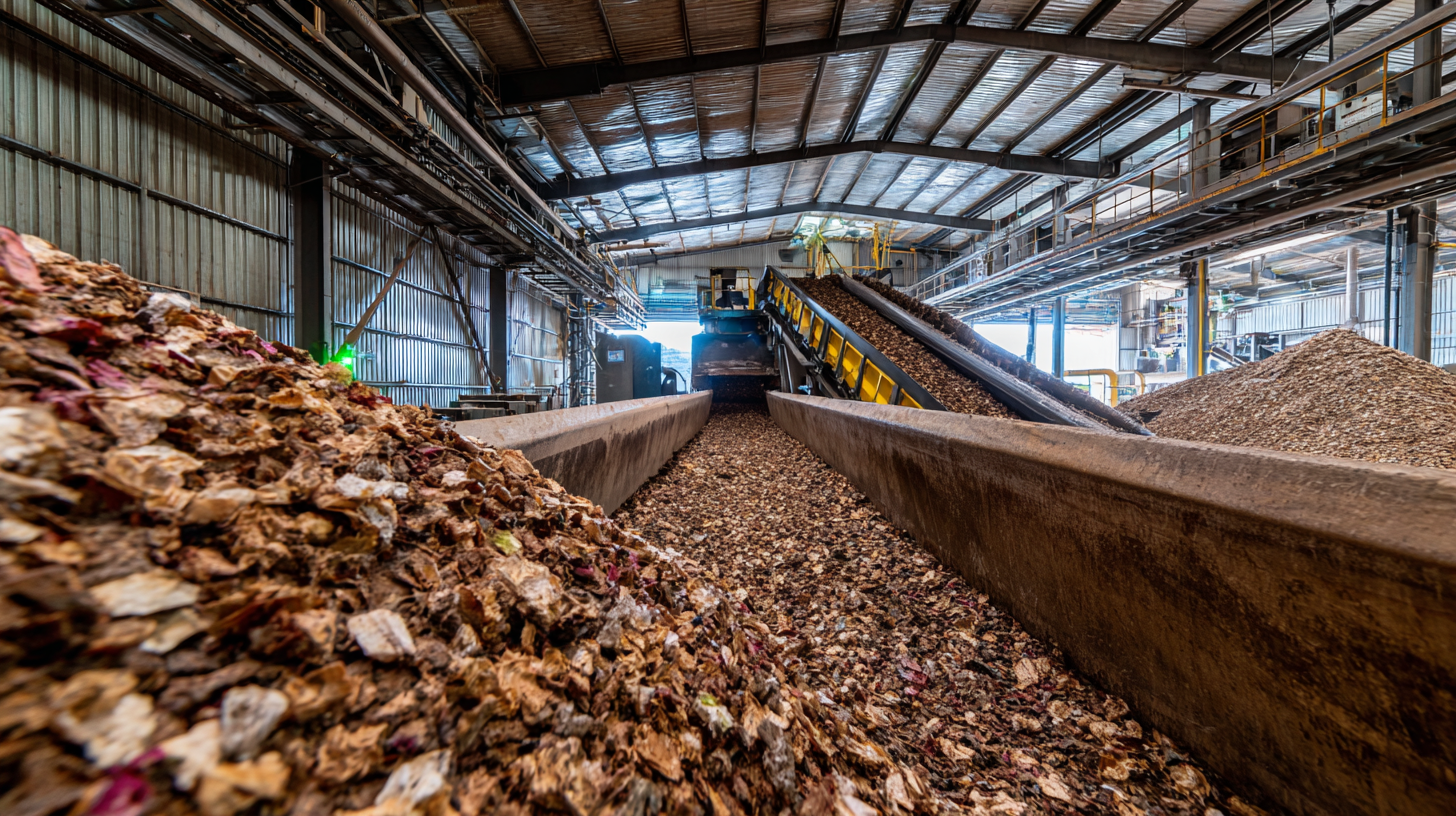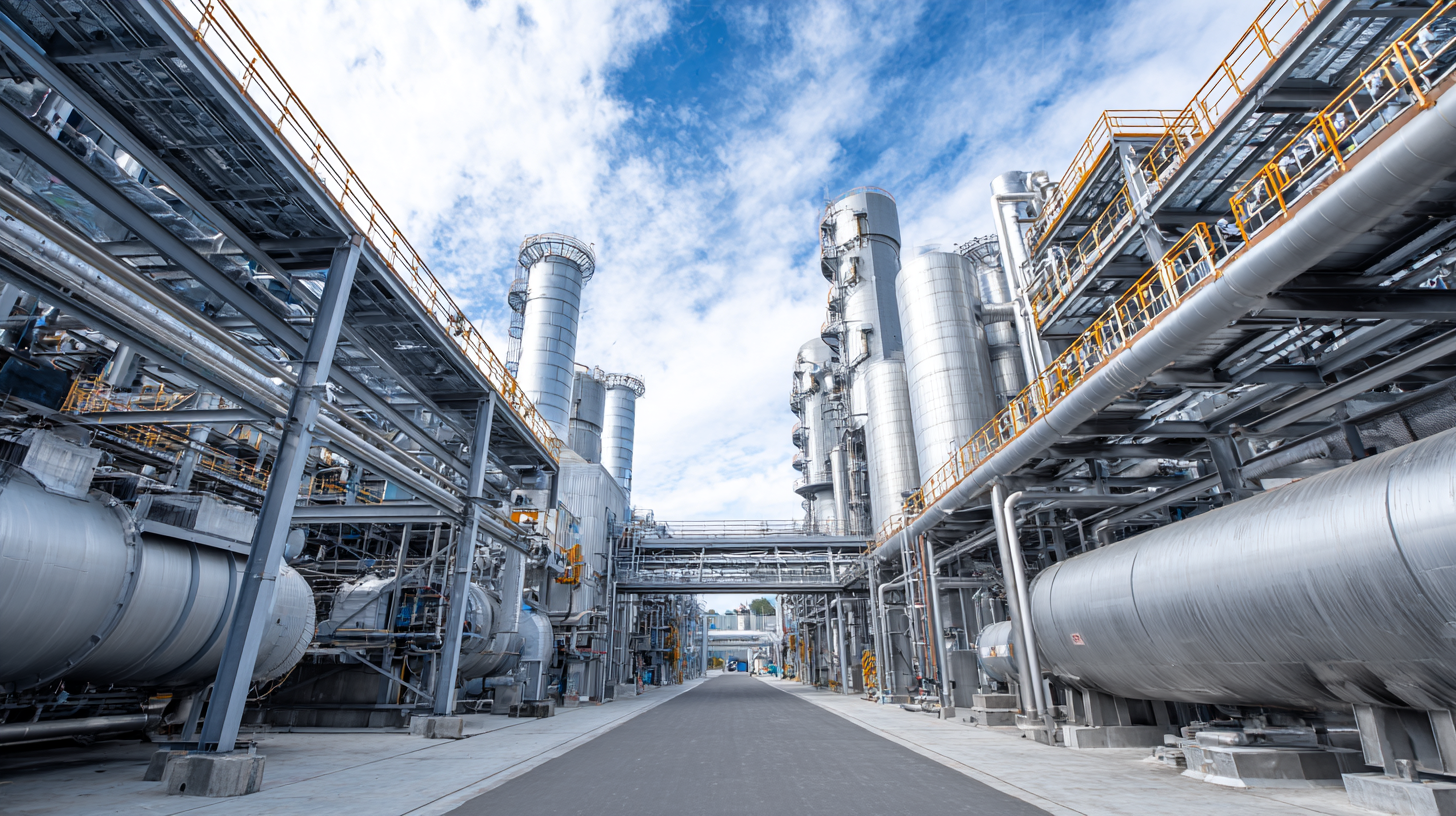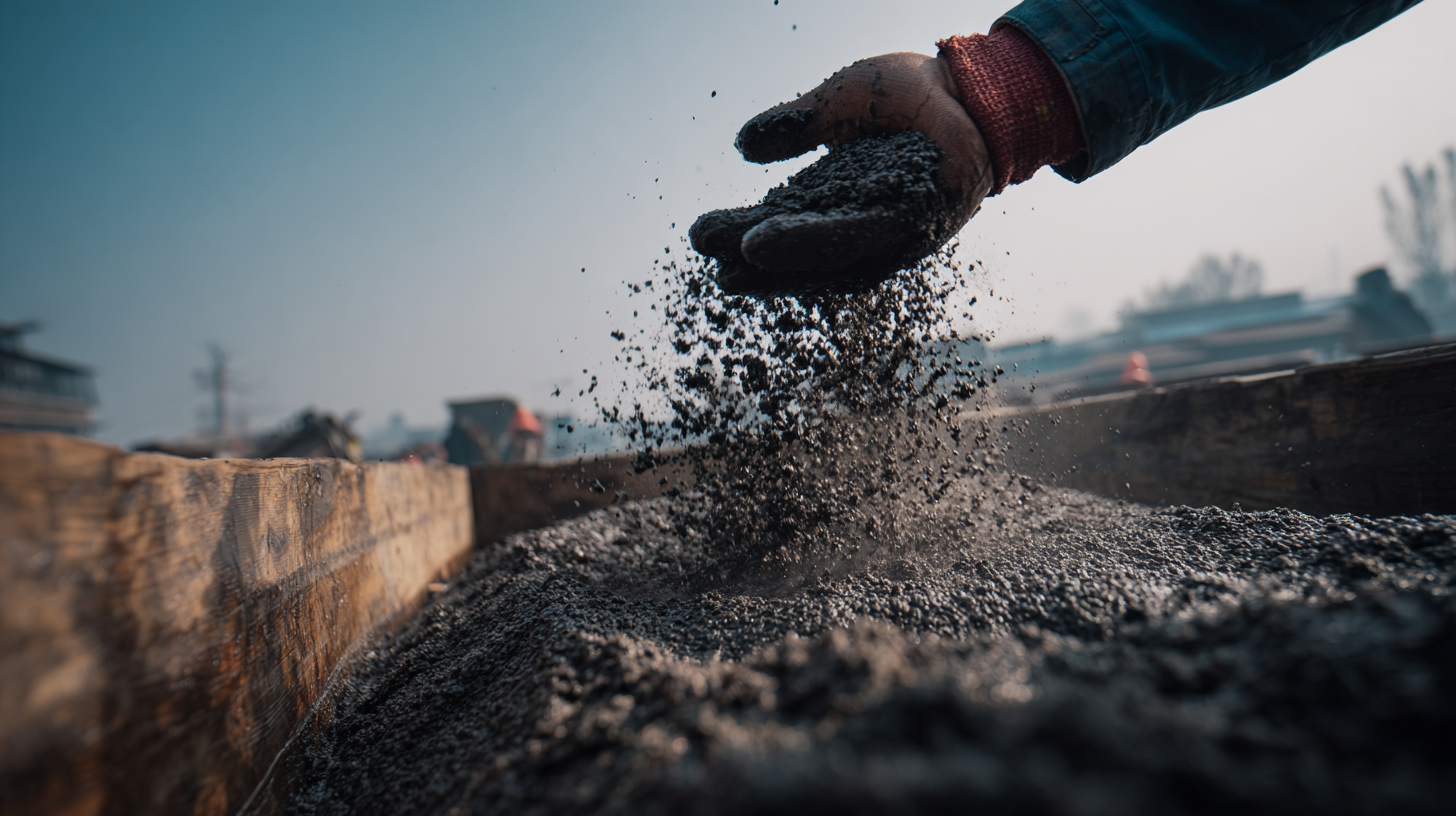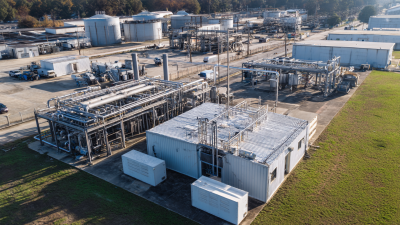As the world really shifts its focus toward sustainable waste management, the importance of effective sludge drying technology becomes more and more obvious. I came across a recent report from the Global Waste Management Market that predicts the sludge treatment industry will hit over $30 billion by 2025—that’s quite a lot, and it shows just how much demand there is for innovative solutions. APEX Company is really leading the charge in this area, offering top-notch sludge drying and conveying equipment, along with some pretty advanced wastewater treatment solutions. Their products aren’t just popular in China—they’re also making a strong impact internationally, which speaks to their dedication to quality and innovation. Exploring new techniques for sludge drying seems crucial right now because it helps address the urgent need for more efficient waste management systems that are easier on the environment. For industries and local governments alike, adopting these cutting-edge technologies is pretty much essential if we’re serious about moving toward sustainability.

Lately, we've been seeing some pretty interesting shifts in the world of sludge drying technology. According to a report from Global Water Intelligence, the global market for sludge treatment is heading towards a whopping $15 billion by 2025. That's mainly because everyone’s realizing we really need smarter, more sustainable ways to handle waste. One cool trend that's been catching on? Solar drying systems. These systems use renewable energy—mainly sunlight—to cut down on costs and cut emissions from traditional drying methods. And the best part? They can dry out sludge by up to 90%, making disposal way easier and a lot kinder to the environment.
On top of that, new mechanical techniques like belt filter presses and centrifuges are making sludge processing more efficient than ever. A study in the Journal of Environmental Engineering even shows that mixing thermal drying with mechanical methods can cut treatment costs by around 30%. That’s a big deal, right? It’s all about making better use of resources and moving away from relying so much on landfills, pushing us towards a circular economy. All these trends point to a future where sludge drying isn’t just more effective, but also more sustainable—definitely the way forward in waste management.
| Technology Type | Drying Efficiency (%) | Energy Consumption (kWh/kg) | Facility Footprint (m²) | Operational Cost ($/ton) |
|---|---|---|---|---|
| Solar Drying | 85 | 0.05 | 20 | 15 |
| Belt Dryers | 90 | 0.15 | 50 | 30 |
| Rotary Drum Dryers | 88 | 0.20 | 60 | 35 |
| Fluidized Bed Dryers | 92 | 0.18 | 70 | 40 |
| Microwave Drying | 95 | 0.10 | 30 | 25 |
When it comes to sludge drying tech, comparing the traditional methods with newer, innovative ones really shows how far we've come in making waste management more sustainable. The old-school techniques are often pretty energy-hungry and face criticism for their environmental impact and high costs. But now, more companies are jumping on the bandwagon of smart solutions like solar-powered drying systems and cutting-edge nanotech stuff. Not only do these new approaches cut down on energy use, but they also boost efficiency — helping both the planet and the bottom line.
Take solar agricultural drying methods, for example — they’re a great sign of where things are headed. These techs tap into renewable energy, making waste handling greener and cleaner. Plus, innovations like nano-spray drying are pretty exciting — they can produce tiny, uniform particles that perform better across different uses. As industries start to adopt these new methods more widely, the whole sludge drying scene is set for a major upgrade. In the end, we're moving toward smarter waste management solutions that really sync up with global sustainability goals.
Lately, there's been a real buzz around exploring creative new ways to dry sludge, especially as folks look for more sustainable waste management options. A big part of this is understanding how thermal and non-thermal methods can really boost how effectively moisture gets out. For example, recent advances in thermal drying techniques have shown they can strip away a huge chunk of water—up to 74% during rainy seasons—which is pretty impressive. This doesn’t just dry out the sludge; it also improves its physical and chemical makeup and even opens up chances for energy recovery. That’s why thermal drying is becoming a go-to in efficient waste treatment.
On the flip side, non-thermal methods are also catching attention. There are some cool new techniques, like low-temperature drying that uses high-speed particle spinning to dry urban sewage sludge quickly—no phase change needed. It’s a neat example of how non-thermal approaches can work alongside traditional ones, often with less energy use. Combining both thermal and non-thermal strategies really paints a fuller picture, offering smarter ways to handle sewage sludge. In the end, it’s all about supporting a more sustainable, circular approach to waste management—and honestly, that’s pretty exciting stuff.
You know, when it comes to managing waste sustainably, there's been some pretty exciting progress lately—especially with how we dry sludge. As industries generate more and more wastewater sludge, finding efficient and eco-friendly ways to handle it becomes more important than ever. One cool development is the use of environmentally friendly additives; they really make a difference. Not only do these additives speed things up when drying sludge, but they also help cut down on the energy we use with traditional drying methods—so it’s a win all around.
Here at APEX, we totally get how vital it is to blend cutting-edge tech with sustainability. Our top-notch sludge drying and conveying equipment is built to perform well without hurting the environment. Plus, by adding eco-friendly additives into our systems, we’re not just making the drying process more efficient—we’re also helping our clients hit their sustainability targets. We’re proud to have a strong reputation both in China and around the world, and our commitment to providing high-quality wastewater treatment solutions keeps earning us the trust of our customers. At the end of the day, we’re all about coming up with innovative ideas to pave the way for a more sustainable future in waste management.
When it comes to making waste management more sustainable, new sludge drying tech really seems to be making a difference. These innovations are changing the game for how cities deal with wastewater byproducts. You see a lot of real-world examples where these new methods have been successfully put into action across different sectors, showing off their effectiveness and environmental perks. For instance, there’s a pioneering wastewater treatment plant in Europe that started using a solar-powered sludge drying system. It’s a pretty cool setup because it cuts down on energy use while ensuring the sludge gets dried out efficiently.
If your community is thinking about jumping into these technologies, a couple of tips might help. First off, it’s smart to look at your local conditions—what works best can vary a lot from place to place. Chatting with stakeholders early on can really help things go smoothly and get folks on board. Also, trying out a small pilot project before going all in with a big installation can give you some great insights and let you tweak things based on real data.
Oh, and here’s another interesting example from Asia. A wastewater facility there combined high-tech thermal drying with cogeneration, meaning they used the heat from drying to produce electricity. Not only did this speed up sludge drying, but it also generated power from waste heat—talk about turning trash into treasure! Strategies like this can seriously boost sustainability efforts and show how innovative tech can lead to big improvements in how we handle waste and care for the environment.

As we work through the tricky world of sustainable waste management, one thing really catching attention is advancements in sludge drying tech. Lately, it feels like there's a real shift happening—toward methods that are more energy-efficient and kinder to our planet. Things like solar-powered drying systems and new thermal treatments are getting more popular, and honestly, they look pretty promising as alternatives to the old-school drying methods. Not only do these new techs help cut down on energy use, but they also lower greenhouse gas emissions, which lines up nicely with global sustainability goals.
If you're thinking about jumping into these new technologies, a good first step is doing your homework—dig into the research and run some feasibility checks before you get started. Chatting with tech providers and experts along the way can really help you figure out what’s best for your specific needs. And don’t forget to keep an eye on new laws and funding opportunities; they can make adopting these cutting-edge sludge drying methods a lot easier.
Looking ahead, I believe we’ll see more digital solutions like IoT and AI making a big difference—helping to monitor things in real-time and optimize the whole drying process. For companies eager to stay ahead of the curve, partnering with tech firms could be a game-changer, helping them stay competitive in this rapidly changing waste management scene.

: Conventional drying methods are often energy-intensive and face rising operational costs, while innovative methods, such as solar-assisted drying and nanotechnology, are designed to reduce energy consumption and enhance drying efficiency.
Solar-assisted drying systems utilize renewable energy sources, providing a cleaner alternative for handling waste materials while contributing to sustainability and reducing environmental impacts.
Eco-friendly additives enhance the efficiency of sludge drying by accelerating the dehydration process and decreasing energy consumption compared to traditional methods.
Nano-spray drying technology allows for the production of smaller and more uniform particles, improving performance in various applications and contributing to more efficient waste management practices.
APEX Company incorporates eco-friendly additives into their sludge drying and conveying equipment, optimizing performance while minimizing environmental impact and supporting clients' sustainability goals.
The market for sustainable sludge drying solutions, particularly solar agricultural drying techniques, is expected to see a robust compound annual growth rate in the coming years due to the growing demand for efficient waste management.
As industries produce increasing volumes of wastewater sludge, the need for more efficient and eco-friendly drying solutions has become paramount to ensure effective waste management.
The adoption of innovative drying technologies is set to evolve the sludge drying landscape, leading to improved waste management practices that align with global sustainability efforts.
When it comes to sustainable waste management, sludge drying technology is seriously evolving at a pretty quick pace. There are so many new approaches popping up that promise to be more efficient and better for the environment—it's pretty exciting stuff. In this post, I’ll break down some of the latest trends in sludge drying, comparing the traditional methods to these new, cutting-edge techniques. We’ll also chat about how thermal and non-thermal processes play a big role in making drying more effective, and I’ll mention some eco-friendly additives that help up the game even more.
Plus, I’ve included real-world examples that show these innovations in action—seeing is believing, right? Looking ahead, I’ll share some thoughts on what’s likely coming next in this field, so stay tuned. Oh, and by the way, APEX Company is right there at the forefront of all this change, providing top-notch sludge drying and conveying equipment that not only meets growing global needs but also earns the trust of our customers. Exciting times ahead!






